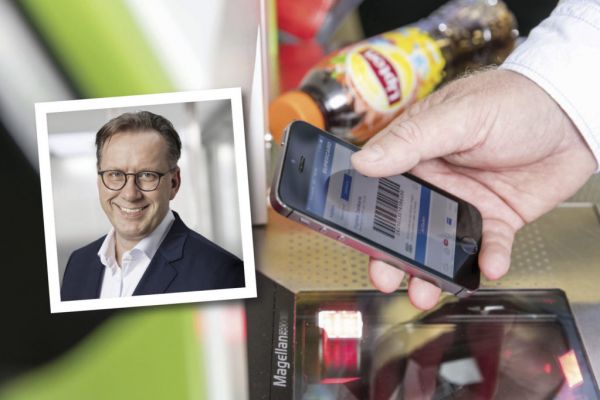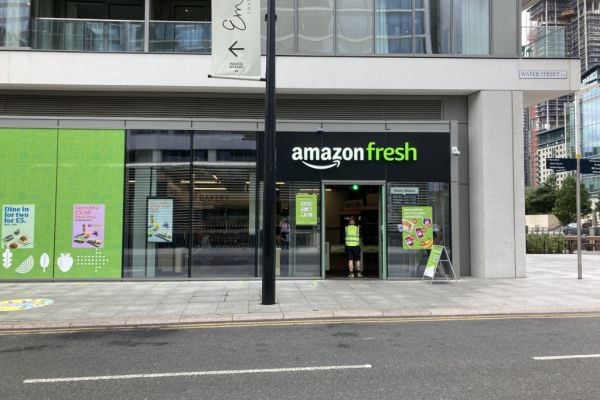The retail industry has now entered the Omnichannel Age, necessitating greater investment in digital services, as well as sales and presentation areas.
This is according to a recent study carried out by the EHI Retail Institute, entitled Der Store im Omnichannel-Zeitalter (The Store in the Omnichannel Age), which surveyed senior management personnel at retailers, construction firms, design companies, architects and planning firms. It sought to determine how the digital revolution will impact the retail sector in the years to come.
As the study found, while most actors within the sector are pro-digital, there is also a growing awareness of the challenges of integrating digital into the physical retail space, and an eagerness to avoid short-term gimmicks and focus on solutions that have longevity.
“Over the past few years, some product launches proved to be technical gimmicks that ultimately neither paid off, nor were accepted by end users the way we expected,” a spokesperson for Stuttgart-based architects Blocher Blocher Partners explains.
“[Going forward, the firm expects] digital solutions that are maybe not as flamboyant as before, but are efficient, and seamlessly connect PoS with the digital world, in line with the omnichannel concept.”
EuroShop: Your Digital Hub
With that in mind, this year’s EuroShop will showcase digital solutions and PoS and in-store technologies that are more than just a mere ‘add-on’ to retail businesses. In many cases, they form an integral part of a business’s future aspirations.
As Elke Moebius, global head of retail and director of EuroShop at Messe Düsseldorf, tells ESM, the rise of digitalisation in the retail space is arguably the most significant new development in the show’s 50-year history, and underlines EuroShop’s importance as a ‘digital hub’.
“The future of the retail trade will be determined, above all, by customers roaming the available shopping worlds on all channels, whether it’s at high-street shops, on tablet computers, or on smartphones,” she explains. “Moreover, customers will want to be unrestrained as they hop on and off the various channels.
“For retailers, this means connecting channels in such a way that products and services can be accessed by shoppers on all channels with maximum convenience, yet also in a way that gives them an enjoyable shopping experience.”
Understanding Big Data
An essential support mechanism for retailers seeking to expand their omnichannel presence is the need to embrace cloud computing and data analytics. Until recently, these have been seen more as ‘nice-to-haves’ by the retail sector, which has perhaps lacked the tools to sufficiently process Big Data.
As the sector is discovering, the validity of data increases with the amount of data available. This is, of course, provided that there are suitable tools available for analysis, in order to identify demand trends early on, optimise ranges and inventories, or offer networked shoppers a seamless customer journey across all channels.
Predictive analytics and Big Data have, by now, become established as central themes in the retail technology segment of EuroShop, and this is even more the case at this year’s event.
“In the past, retailers were often sceptical and reluctant when it came to using cloud applications,” says Moebius. “Today, however, the benefits of cloud technology are widely recognised in terms of availability and flexibility. Also, many retailers now take the view that they ‘no longer need to do everything themselves’, but that it is good to focus on a small number of essential applications.”
As a recent study by business consultancy BearingPoint and the Institute for International Retail and Service Management discovered, the focus is moving away from tangible aspects of the retail experience, such as merchandising, towards a better understanding of the consumer’s needs – something that is only possible through analytics.
“Companies that fail to consistently record customer data and compile this data to generate shopper profiles will suffer a strategic competitive drawback,” a BearingPoint spokesperson explained.
Some of the areas of focus at this year’s EuroShop will include data-warehousing, business intelligence and predictive analytics. As retail is such a highly competitive market, special focus will also be placed on the latest high-speed analytics systems, while tools to source customer data through alternative means, such as smartphone data, will also be explored.
Rethinking The Physical Store
In addition, arguably more so than ever before, physical stores themselves also need to have a clear emotive appeal, to reinforce a retailer’s omnichannel positioning.
“It’s not a matter of creating individual shopping events,” says Moebius. “Instead, there is a demand for storytelling. Whether it’s architecture, design, lighting, or the integration of cutting-edge digital media into shopfittings, everything needs to follow a coordinated script, so that customers feel a certain buzz.”
Shopfitting has long been part of the modus operandi at EuroShop, and among the new digital elements certain to catch the eye at this year’s event are the latest high-spec refrigeration solutions, digital signage, lighting, visual marketing, in-store kiosks and terminals, digital shelving, shelf-edge labelling and any number of PoS solutions aimed at increasing efficiency in the checkout process.
Smartphone Revolution
How retailers embrace mobile and smartphone technology is also likely to be a major talking point. Consumers are more digitally empowered than ever before, increasingly looking to utilise mobile solutions when in store, such as digital payments.
As the contactless-payment industry evolves, so the smartphone is likely to become the key medium used by consumers to pay for items, and retailers need to consider how to incorporate this technology into the store environment.
Global Acceptance
International examples also illustrate that customers are largely willing to accept the new technology. A recent MasterCard study found that 41% of consumers in the UK prefer mobile payments. Acceptance is greatest, however, in the Middle East, Africa and Asia.
According to Euromonitor, mobile payments in China doubled in volume, accounting for $235 billion last year, surpassing the US. Globally, a total of about $600 billion in sales was handled using mobile payments in 2016, while current forecasts predict that volume to at least double over the next five years.
At the same time, smartphones are increasingly becoming shopping companions for consumers, who use them to save shopping lists and compare prices, search for products and reviews, and collect coupons and vouchers.
At EuroShop 2017’s Retail Technology area (EuroCIS, Halls 6 and 7a), visitors will have the opportunity to discover the latest innovations and new product developments in this dynamic sector, and how best to integrate smartphone technologies into the physical retail space.
For further information, visit www.euroshop-tradefair.com.
© 2017 European Supermarket Magazine – your source for the latest retail news. Click subscribe to sign-up to ESM: The European Supermarket Magazine.
















